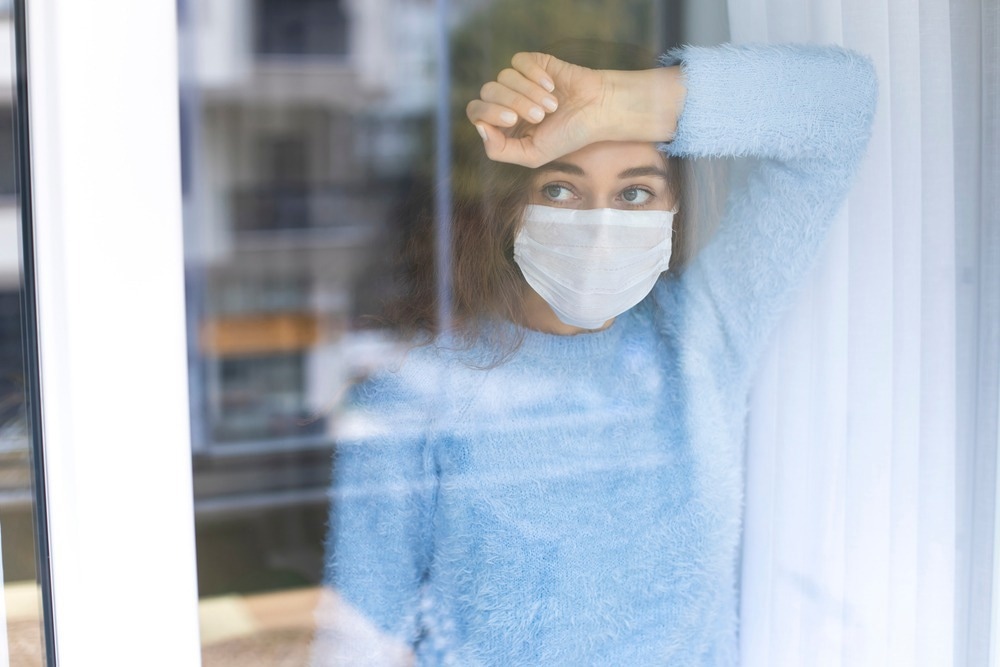 By Neha MathurReviewed by Danielle Ellis, B.Sc.Dec 15 2022
By Neha MathurReviewed by Danielle Ellis, B.Sc.Dec 15 2022In a recent article published in Scientific Reports, researchers reported the findings of the United Kingdom coronavirus disease 2019 Mental Health and Wellbeing study (UK COVID-19-MH).
 Study: Probable COVID-19 infection is associated with subsequent poorer mental health and greater loneliness in the UK COVID-19 Mental Health and Wellbeing study. Image Credit: Ahmet Misirligul/Shutterstock
Study: Probable COVID-19 infection is associated with subsequent poorer mental health and greater loneliness in the UK COVID-19 Mental Health and Wellbeing study. Image Credit: Ahmet Misirligul/Shutterstock
They conducted this longitudinal national survey among the general UK population between March 2020 and July 2021 to determine whether contracting probable COVID-19 early during the pandemic resulted in poor mental health outcomes at three different follow-up times. So they followed up with all the eligible study participants at one, five, and 13 months between May–June 2020, Oct-Nov 2020, and June-July 2021, respectively.
Background
Understanding the psychological distress associated with the COVID-19 pandemic is crucial to inform future global public health policies as the world deal with its aftermath.
About the study
In the present study, researchers sent email invitations to the members of Panelbase.net, an online UK portal with ~300,000 registered adults between 31 March 2020-9 July 2021, to participate in an online survey on health and well-being. They used a quota sampling methodology to categorize these members into age, gender, socioeconomic status, and region of residence in the UK-based quotas.
They used a single-item measure to assess the experience of contracting COVID-19 during waves one, two, and three and the nine-item Patient Health Questionnaire (PHQ-9) and seven-item Generalized Anxiety Disorder (GAD-7) to assess depression symptoms. Likewise, they used a seven-item Short Warwick Edinburgh Mental Wellbeing Scale (SWEMWBS) to assess mental well-being. They also measured loneliness using the UCLA three-item scale and a questionnaire to enquire about pre-existing mental health conditions.
The team analyzed mental health outcomes at waves four, six, and eight that ran between 27 May-15 June 2020, October 1-November 4, 2020, and June 2-July 9, 2021, respectively. Wave four corresponded with the time of easing the lockdown restrictions, wave six coincided with an increase in lockdown restrictions again, and wave eight coincided with an easing of government restrictions in all sectors. The researchers used chi-square analyses to assess demographics-related variations in individuals reporting COVID-19. Likewise, they performed a two-step regression analysis, wherein they entered binary COVID-19 variables self-reported by the participants during waves one, two, or three at step two.
Study findings
Between 31 March and 9 April 2020 (wave 1), the final study dataset comprised 3077 members. The response rate of these individuals varied during subsequent COVID-19 waves. For instance, during waves four, six, and eight, 77%, 74%, and 65% of these 3077 participating members responded to the questions in the survey(s). Only 9% of participants contracted COVID-19 during wave one between March and May 2020, and barely 13% of the overall sample reported having COVID-19 at any follow-up time points.
However, having COVID-19 resulted in poorer mental health, including depression, anxiety, feelings of loneliness, and poor well-being, with effects being persistent for up to 13 months. Not only the relationship between probable COVID-19 and poor mental health was long-term, but this relationship was also bidirectional. Interestingly, the researchers noted that loneliness was the only mental health outcome correlated, though clinically insignificant, with probable COVID-19 during wave eight.
The researchers reported odds ratio (OR) for depression (ORdepression) and anxiety (ORanxiety) of 1.82 and 1.56 at five months follow-up. At the 13-month follow-up, these ORs increased by 2.01 and 1.67 times. Indeed, having probable COVID-19 increased the odds of suffering from clinically significant depression and anxiety six months later by around 1.6 times.
Intriguingly, the observed association between probable COVID-19 and mental health outcomes remained the same regardless of a participant's pre-existing mental health condition. Logistic regression analysis revealed that prior mental health condition(s) increased the odds of catching probable COVID-19 in the subsequent 13 months, with OR equal to 1.31. Likely, an interplay of different factors at different stages of the pandemic was responsible for the observed associations. Nevertheless, more investigation is required to understand the underlying causal mechanisms.
Conclusions
The study results highlighted that apart from post-viral symptoms, such as fatigue and cognitive deficits, a substantial number of people also experience clinically significant levels of depression and anxiety post-COVID-19. Thus, public health policies should continue to focus on mental health interventions, with support available from healthcare professionals for all patients recovering from COVID-19.